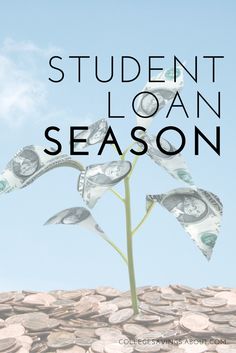As high school seniors and their parents begin to review their acceptance letters and financial aid award letters, some are realizing that they are going to need an additional source of money to be able to afford a particular college.
This is when student loans come in handy. It may seem funny to think of this as a student loan “season” because that term is usually related with the weather or hunting.
But you may actually have to hunt around a bit to make sure you have the best student loan package available.
First of all, take a look at the financial aid package the school is offering as it may already include student loans. Don’t be surprised to see terms like “Direct,” “Subsidized,” or “PLUS” included in that offer. It is important that you understand exactly what each of these terms means so that you will completely understand the financial obligations you are making. Here are the most important things you need to comprehend regarding federal student loans:
Who is borrowing the money? You must understand who is borrowing the money. If the school lists a “Direct Loan” then the student is the borrower. After graduation this loan will appear on the student’s credit report, and the student will be accountable for repayment. If there is a “PLUS” loan listed, then the parents are borrowing the money. This will show up on the parents’ credit report and might affect their ability to borrow money for other purposes. If there is extreme financial requirement, the student may be eligible for a Perkins Loan, with the school itself as the lender. Students and parents should discuss who is going to be responsible for repayment prior to taking out any type of student loan.
Will the interest be deferred? For a “Direct Loan” the next step is to know whether it is subsidized or unsubsidized. If it is subsidized, the U.S. Department of Education pays the interest while the student is in school. If the loan is unsubsidized, the student is responsible for paying the interest during all periods. You may choose not to make payments during the time you are in school, but the interest amount will still build up and will be added to the principal amount to be repaid upon graduation.
If your financial aid package comprises federal student loans, you will have to decide whether or not you will accept this money. If you do, look for information in the letter regarding how to go about that. If this is your first time receiving a Direct Loan, you will need to complete entrance counseling and sign a Master Promissory Note (MPN), agreeing to the terms of the loan.
Check Out Private Student Loan Options
After federal student loan monies have been applied to the anticipated college costs, it is still possible that more funds will be needed. This is where you will need to hunt for private student loan options, such as Discover Student Loans. Here it is very vital to gather information from several sources so you can compare the opportunities against each other.
When comparing private student loans, you will need to understand whether the interest rate is fixed or variable, and whether interest must be paid during the school years or if it can be deferred. A private student loan might also require a co-signer as there is a more thorough qualification process.
Research your options carefully and you will hit the target when hunting for student loans.

